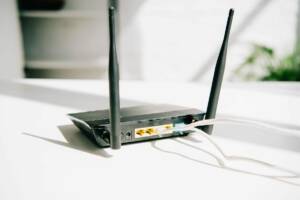5 reasons why 4G may not work on your device
1. 4G mode disabled: Make sure your device has 4G mode enabled. If you are using a smartphone, check your network settings and make sure that the 4G network connection is selected.2. Insufficient Signal: If your signal strength is insufficient, your Internet speed may be significantly slower or even stop working. Try moving to another location or rebooting your device.3. Carrier Issues: If your cellular carrier is having network issues, this may cause your 4G to not work. Check the operator's notifications and messages on their website.4. Slow Internet Speed: If you use a lot of data, your Internet speed may slow down. In this case, try reducing your Internet usage or contact your operator for help.5. Device Problems: If the device has hardware problems, it may cause the 4G to not work. Check your device for damage and contact the manufacturer for assistance. If you are experiencing 4G problems, check these possible causes to make sure your device is working properly and quickly. If the problem persists, contact your service provider or device manufacturer for assistance.
How to check network settings for 4G
If you have problems with 4G, the first thing you need to do is check your network settings. All 4G settings must be configured correctly on your device to ensure maximum speed and stable performance.
The following steps will help you check your network settings for 4G:
1. Go to the device settings and find the 'Network and Internet' section.
2. Select 'Mobile Network' and make sure 4G mode is enabled.
3. Check that your device supports 4G and that you have a network connection.
4. Check your access point (APN) settings. Make sure they are configured correctly for your carrier.
5. Try rebooting your device and check the settings again.
If these steps do not resolve the issue, try contacting your service provider to see if there are any network issues. Updating the device firmware or replacing the SIM card may also help.
Remember that proper network setup is key to getting the best 4G network performance. Don't hesitate to ask for help if you have any problems.
What to do if your operator does not support 4G
If your carrier doesn't support 4G, you have several options. First, you can contact your operator and find out if there are plans to introduce 4G support. If the answer is no, you can consider switching to another operator that supports 4G.
If switching to a different operator is not an option, you may want to consider purchasing a new device that supports older communication standards, such as 3G or 2G. You can also try using the device in other places where the operator supports 4G.
If none of these options work, you can try using apps that optimize Internet speed and reduce data consumption. Some of these applications include Opera Mini and UC Browser.
Overall, if your carrier does not support 4G, there are several options to resolve this issue. It is important to evaluate all available options and choose the one that best suits your situation.
If you have a problem with 4G in a certain place, then do not despair. There are several measures you can take to improve your call quality.
The first step is to check your phone settings. Make sure that you have 4G mode turned on and your operator is selected in the network settings. If this doesn't help, try restarting your phone or putting it in airplane mode for a few minutes.
If after all these steps the problem is not solved, then you should contact your telecom operator. There may be maintenance going on in your area or the signal simply isn't reaching your home.
Another way to improve communication quality is to use signal amplifiers. They are installed indoors and amplify the signal, allowing for a more stable connection.
But do not forget that the quality of communication may also depend on weather conditions and terrain. Some areas may have weak signal due to mountains and forests.
In any case, if you have problems with 4G, do not despair. There are many ways to improve communication, and you're sure to find one that works for your situation.
Check for updates for your device
If you're having trouble getting 4G on your device, the first thing to do is check for updates to your operating system. Often, developers release updates that fix bugs and improve network performance.
To check for updates on iOS devices, you need to go to Settings, then select “General” and “Software Update”. If updates are available, follow the onscreen instructions to install them.
On Android devices, checking for updates may vary depending on the manufacturer. You can usually do this by going to the About Phone/Tablet settings section, then selecting Software Update or About.
Please note that installing updates may take some time and require a Wi-Fi connection. However, it may help resolve network issues and improve connection quality. If you are experiencing a lack of 4G signal on your iPhone or Android device, do not despair – this is a common problem that can be easily solved. First of all, make sure that you are in a 4G coverage area. If you are in a coverage area but still do not receive a 4G signal, try restarting your device. If this does not help, check your device settings and make sure that you are connected to a 4G network. If all the settings are correct, try contacting your carrier, they may have network issues. We hope that these tips will help you resolve the 4G signal issue and enjoy fast internet on your device. If you are experiencing 4G issues, you can contact your carrier’s support service. To do this, dial the technical support number and report the problem. You can also try to solve the problem yourself by restarting your phone or checking your mobile internet settings. If the problem is not solved, you need to contact the support service, where you can get professional help. Do not forget to tell the operator about the place where you have a problem with 4G, this will help to solve the problem faster and improve the quality of communication in the future. If you are faced with the problem of no 4G signal on your device, the first thing you need to do is make sure that you have paid for the mobile Internet service. If the payment has been made, try rebooting the device or switching the network mode to automatic. If this does not help, you can try to delete and re-add the mobile network profile in the device settings. If all of the above measures do not lead to a result, you should contact the technical support of your mobile operator. Perhaps the problem is related to a network malfunction in your area or a malfunction of your device. The operator's technical support will help to find out the cause of the problem and offer a solution. In order for the support service to solve your problem with 4G, you need to provide the following information:
1. Location: Find out where you are currently located, as this may be an important factor in identifying the problem.
2. Device: Enter the model and brand of your device on which you are using 4G.
3. SIM card: Check whether the SIM card is installed correctly in your device and whether it has expired.
4. Signal availability: Make sure your device has an acceptable signal strength.
5. Time the problem occurred: Check when the 4G problem first occurred.
6. Problem: Describe exactly what problem you have with 4G so that support can resolve it faster.
All this information will help the support team quickly determine the cause of the 4G problem and offer the most effective solution.
Read further:






